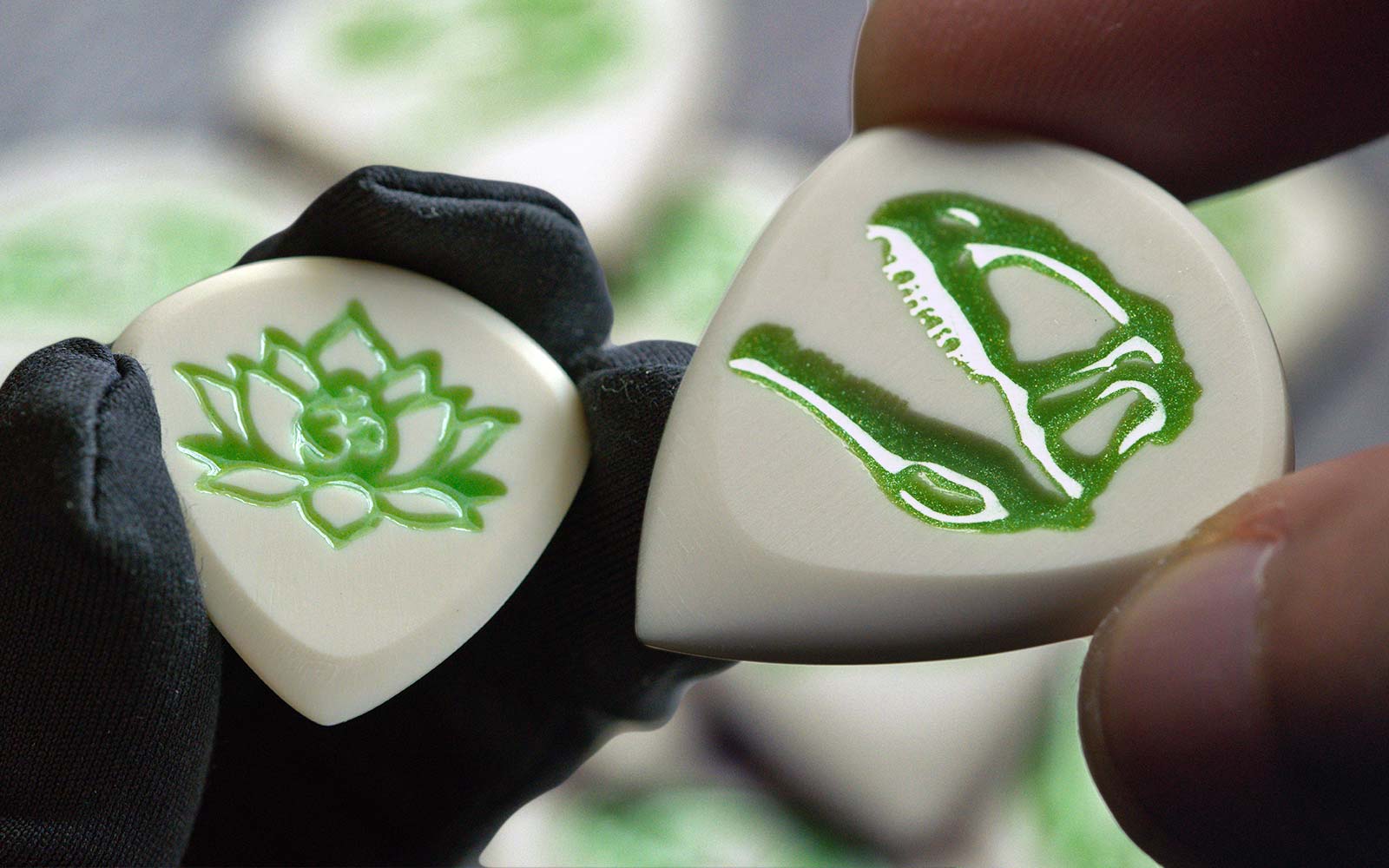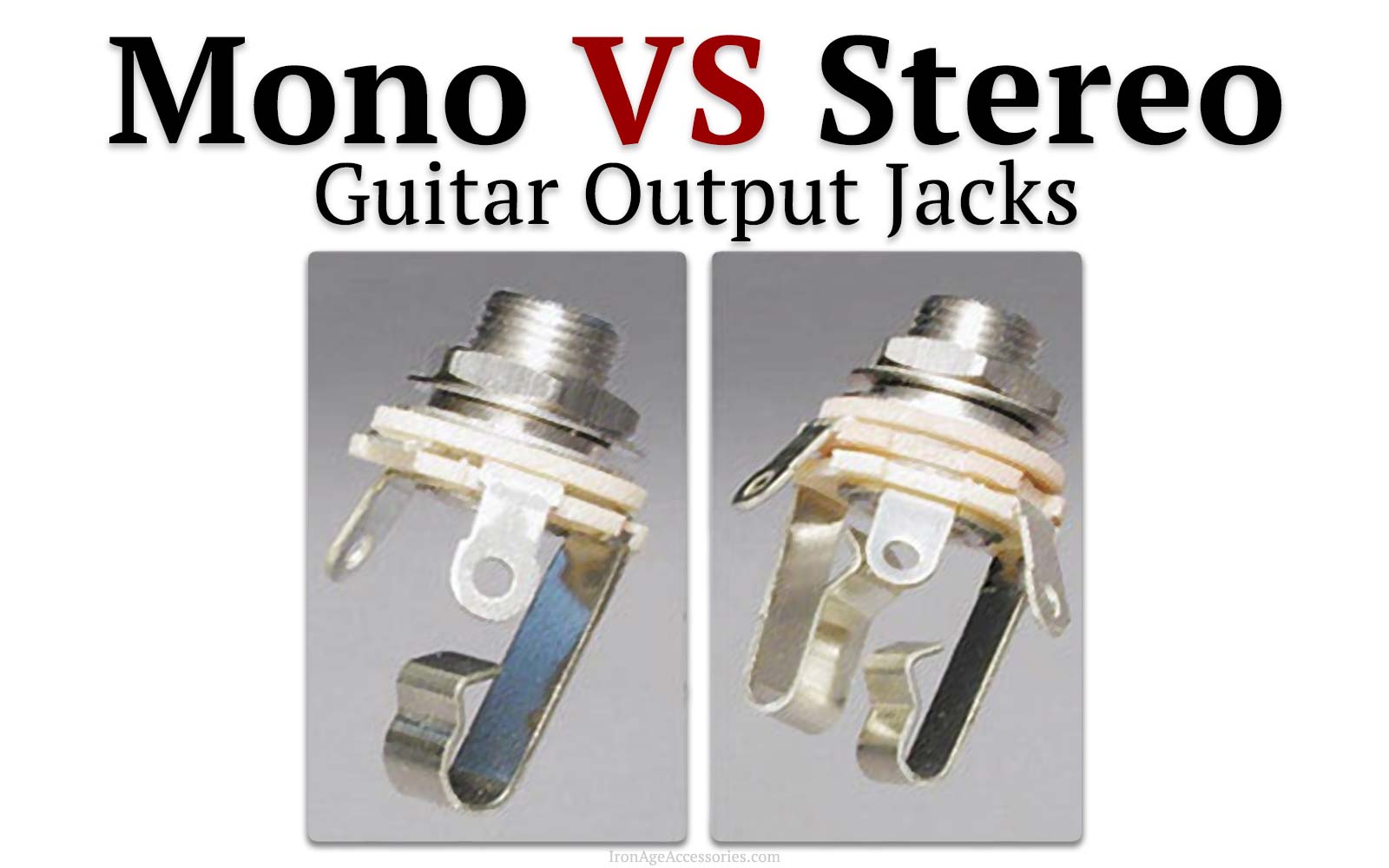The Best Acoustic Guitar Picks: Tips & Considerations For Newbies
by Alex Rodea March 06, 2025
Choosing which guitar pick to use on acoustic guitar can be crucial as it affects the tone, attack, and overall feel of your playing.
Thin picks are often the best choice for acoustic guitar playing because they offer greater control over dynamics, produce a brighter and more articulate tone, and are generally easier to play with, making them suitable for beginners and experienced players alike.
In this article we will go over a few other factors you might want to consider if you feel like experimenting. These factors will include things like thickness, material, shape, and frequently asked questions.
Key Takeaways:
-
Thin picks (under .75mm) are great for acoustic strumming, offering flexibility, ease of play, and a bright tone.
-
Medium picks (.75mm–1mm) provide a balance between strumming and picking, making them a versatile choice for most players.
-
Thick picks (1.25mm+) offer more control and durability, ideal for precise note playing but less flexible for strumming.
-
Material affects tone—delrin picks are durable and reliable, while boutique picks like those from Iron Age add a unique character.
-
Experimenting with different pick thicknesses, materials, and shapes, including handcrafted picks or our very own delrin picks, can help you find the perfect fit.

Choosing a Guitar Pick For Acoustic Guitar: Factors To Consider
Thickness:
Thin picks
Although choosing the right guitar pick for you is subjective & highly personal, the most commonly used for acoustic guitar is thin gauge picks. We define these as any pick under .75mm, give or take.
The reason for this is because thin picks make strumming easier due to their flexibility. They also minimize the chance of the pick getting accidentally stuck across the strings if your technique is not 100%.
Thin acoustic guitar picks also produce a brighter & snappier sound than thicker guitar picks which tend to have a warmer tone.
Overall, thin picks are the go-to for acoustic guitar playing but not the end-all-be-all. Feel free to experiment & try out different shapes, thicknesses, & materials to see what guitar pick works best for you!
Medium picks
Guitar picks of medium thickness of about .75mm to 1mm are perhaps the most versatile picks around. Not only are they abundant, but they are also great for strumming & playing individual notes.
Generally, medium picks will have a bit less flex, which will actually provide you with more picking control.
This is best if you are looking to add a bit of dynamics into your playing instead of full on strumming all of the time.
Last but not least, the tone tends to be a bit warmer, well-rounded, and less snappy when compared to lighter picks. When it comes to acoustic guitar playing, you really can’t go wrong with a light or medium pick.
Thick picks
Thick guitar picks are something we consider above 1.25-2mm but there are boutique & extra heavy guitar picks that go well beyond that. At this heavy thickness, the picks are mainly used for playing lead guitar or individual notes. That’s not to say you can’t strum with them however.
Thick & heavy gauge picks are even warmer sounding than the medium & light options but also offer the least amount of flex. Less flex means less ease of strumming, however it offers more control & dynamics.
Because of the thickness, thick picks tend to be more durable as well. This topic will however be covered more extensively in our next section about materials.
Finally, although this thickness isn’t our first choice, we recommend you try it out for experimentation & first-hand experience. If you don’t find them suitable for your acoustic guitar playing, then maybe you will like them more for use on an electric guitar.
Material:
Celluloid Picks
This material is one of the oldest & most common around for making guitar picks. Originally it was made to mimic & replace tortoise shell picks way back in the day.
The material produces a nice warm tone & you can get dozens or even hundred of these picks for very cheap.
The only drawbacks are that they have low durability & are known to be highly flammable. Great to take on a camping trip to play kumbaya & to have if you need a bit of tinder!
Delrin Picks
This material is also referred to as P.O.M, Polyoxymethylene, or simply, Acetal. It’s also a very common material & you will find it in picks like Tortex & similar models.
The material is a bit more modern & has many uses even outside of guitar playing. This material has strong durability that far surpasses Celluloid.
You can’t go wrong with this material & it is often a first choice for many.
Nylon Picks
Nylon picks tend to be more flexible than the other materials. Nylon is also a very durable material & great for acoustic guitar.
With Nylon, not only do you get the flexibility, but also the durability needed for extensive strumming.
The only drawbacks to this material is that perhaps it’s a bit harder to find as there aren’t as many guitar pick models to choose from as the Delrin picks. Also probably not a first choice for lead playing if you want to maximize your picking control & dynamics… too flappy.
Exotic Materials
Then there’s other materials which are more experimental than anything. There are things like carbon fiber, acrylics, engineering plastics, metal, agate & stone, you name it.
These picks are great if you just want something special or looking to experiment with your guitar playing.
The thing with these types of picks however, is that they all tend to be much more rigid. Because of this, they lend themselves more towards playing individual notes instead of strumming.
For a beginner just starting out, we recommend the more common types of picks, but if you’re looking to venture out, check out some of our handcrafted guitar picks.
Shape:
Standard picks
Standard shaped guitar picks like the Fender “351” are a safe bet when it comes to pick shapes.
Generally the more pointed the pick, the brighter the tone that it will produce as there’s less material touching the strings.
The standard shape is somewhere in the middle, with teardrop shaped picks being a bit smaller & usually being slightly sharper.
Triangle picks
Triangle picks come in a variety of shapes, some with more rounded tips that are similar to the traditional “351” and some with extreme sharpness.
These picks are great because they offer 3 points to play on, so you essentially have 3 picks in 1.
The drawback however is that they can be a bit bulky & better suited for people with bigger hands.
Jazz picks
For smaller hands or people looking to be a bit more agile in their individual note picking, there are the jazz shaped picks.
These are typically on the sharper side, with some of them being tiny like the red Dunlop Jazz3, but there are also larger variations.
These are popular among electric guitar players but there is no reason why you can’t try them out on your acoustic.
Iron Age Guitar Pick Recommendations
For beginners & advanced players alike who are looking to sample various thicknesses, we recommend trying one of our 12-packs of acetal/delrin picks.

 These have a matte finish for grip, are made in the traditional 351 shape, and come in all shapes and sizes: light/medium/heavy/jazz
These have a matte finish for grip, are made in the traditional 351 shape, and come in all shapes and sizes: light/medium/heavy/jazz
If you want to venture out into the handcrafted world,
We recommend something on the lower end such as our crystal spearheads or something from or ivory Parthenon collection.

Finally, for a high-end boutique plectrum made to the highest standards, you can’t go wrong with our flagship Imperator pick, which is part of the imperial collection.

Frequently Asked Questions
What thickness pick is best for acoustic?
The best guitar pick thickness for acoustic guitar playing is a light gauge. This is because they are easy to strum across all strings, plus they produce a bright & snappy tone.
Do you use guitar picks for acoustic guitars?
Acoustic guitars typically have steel strings and are playing with a guitar pick, although some people opt to play using their fingers.
A classical or a Spanish guitar however, usually has nylon strings & these are predominantly played using fingers only.
What is the best pick for acoustic guitar strumming?
The best pick for acoustic guitar strumming is one of a lighter gauge of .75mm or below. These picks tend to be much more flexible & make strumming easier, while making each note ring clearly. Any brand will do.
What kind of pick is best for beginners?
Generally speaking, the best guitar pick for beginners is a medium gauge pick of about .75 to 1mm. These offer the best of both worlds in terms of playing individual notes & strumming.
Conclusion
Personal preference is crucial when choosing a guitar pick for acoustic guitar playing because it can affect how comfortable and natural the pick feels in your hand, as well as how you strike the strings. Ultimately, the best pick for you will depend on your individual playing style and the tone you want to achieve.
Trying out different types of acoustic guitar picks is highly recommended as it can help you find the one that suits your playing style and preference the most. Experimenting with different pick thicknesses, materials, and shapes can help you achieve the tone and feel you desire, and ultimately improve your playing.
Also in Iron Age || General Blog

The 3 Best Engraved Guitar Picks to Personalize Your Playing Experience
by Alex Rodea March 20, 2025
Engraved guitar picks add both style and function, offering extra grip and a personal touch with custom initials, logos, or messages. Whether you're looking for a unique gift or a pick that stands out, check out our top choices and grab your first engraving for free with code...

Guitar Jack Not Working? Here's A Few Easy Steps To Fix Crackles & Pops
by Alex Rodea March 19, 2025

Mono vs Stereo Jacks: Key Differences & How to Wire Them
by Alex Rodea March 06, 2025

The Best Guitar Picks For Bass: A Guide To Help You Choose
by Alex Rodea March 05, 2025

What is a Fret Wrap, String Muter, or String Dampener?
by Alex Rodea March 05, 2025

Guitar String Names & How To Memorize Them
by Alex Rodea March 05, 2025
+Iron Age Blogs
For the latest news & announcements, check out our News & Updates Blog
For tips, tricks, & other informative articles, check out our General Guitar Blog
Become a newsletter subscriber to get the latest info on new blog articles, receive exclusive promo codes, and be notified of upcoming giveaways!
+Recent Articles
-
The 3 Best Engraved Guitar Picks to Personalize Your Playing Experience
March 20, 2025
-
Guitar Jack Not Working? Here's A Few Easy Steps To Fix Crackles & Pops
March 19, 2025
-
Mono vs Stereo Jacks: Key Differences & How to Wire Them
March 06, 2025
-
The Best Acoustic Guitar Picks: Tips & Considerations For Newbies
March 06, 2025
-
The Best Guitar Picks For Bass: A Guide To Help You Choose
March 05, 2025
-
What is a Fret Wrap, String Muter, or String Dampener?
March 05, 2025
-
Guitar String Names & How To Memorize Them
March 05, 2025
-
How To Make Wooden Guitar Picks: Ebony Spearhead
March 05, 2025
-
Top 3 Best Guitar Picks For Grip: Iron Age Edition
March 05, 2025
-
Are Guitar Picks Necessary? Exploring the Pros, Cons, and Playing Styles
March 05, 2025
+Affiliate Notice
Iron Age is a participant in the Amazon Services LLC Associates Program, an affiliate advertising program designed to provide a way for websites to earn advertising revenues by advertising and linking to Amazon.com
Iron Age Guitar Accessories
226 Douglas Way St
San Antonio, TX 78210
USA
⚔️
“Quality is never an accident. It is always the result of high intention, sincere effort, intelligent direction and skillful execution. It represents the wise choice of many alternatives.”
~William A. Foster (MOH Recipient, 1945)
Sign up for the Iron Age newsletter to Save 15% on your 1st order, plus get exclusive offers, product updates, and early access to giveaways!
© 2025 Iron Age Guitar Accessories.
Est 2015.


Alex Rodea
Author
Founder of Iron Age, my guitar journey began in 2006, fueling a passion for crafting premium guitar accessories that embody timeless style & innovative expression. Through my Stay Tuned Guitar site I also share tips & info for new guitarists, offering everything from beginner tutorials to DIY tips & general music knowledge.